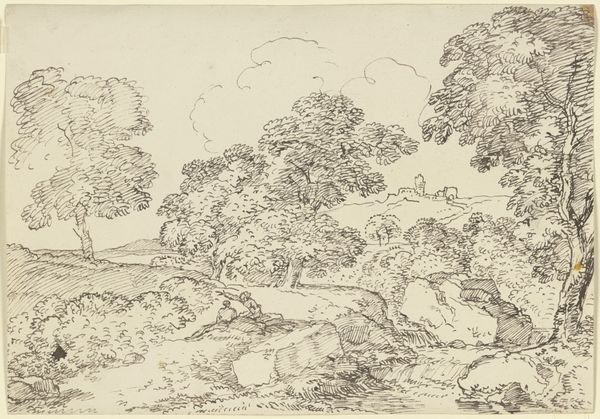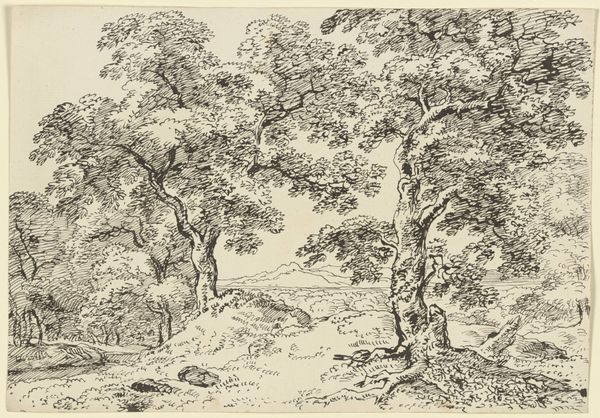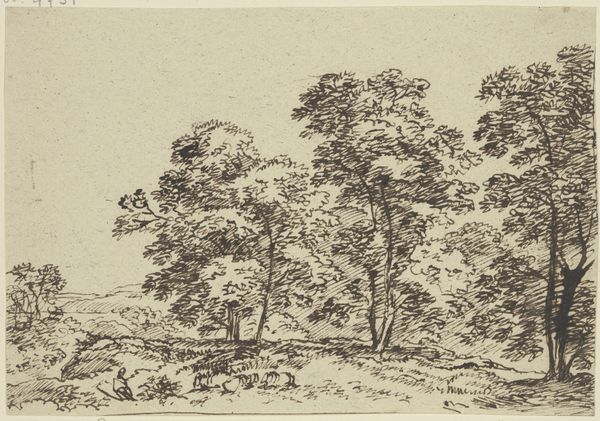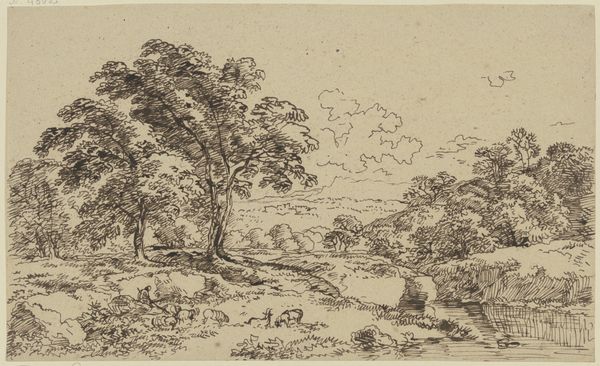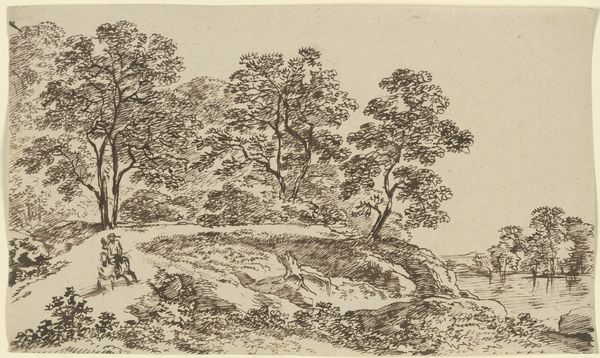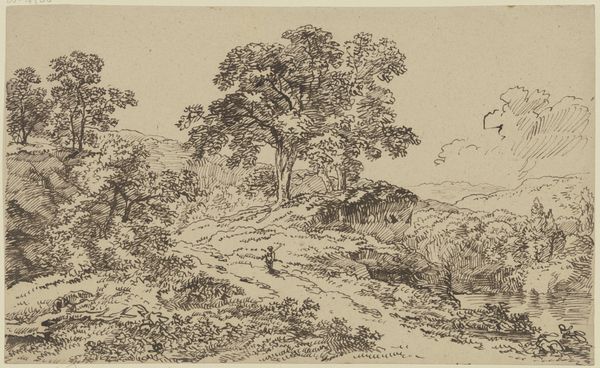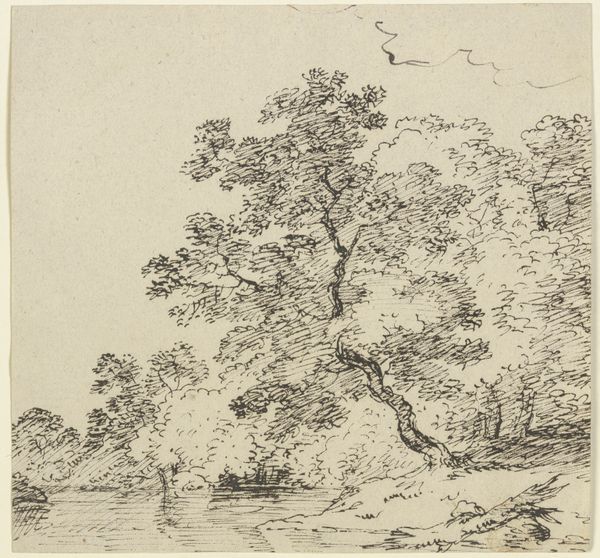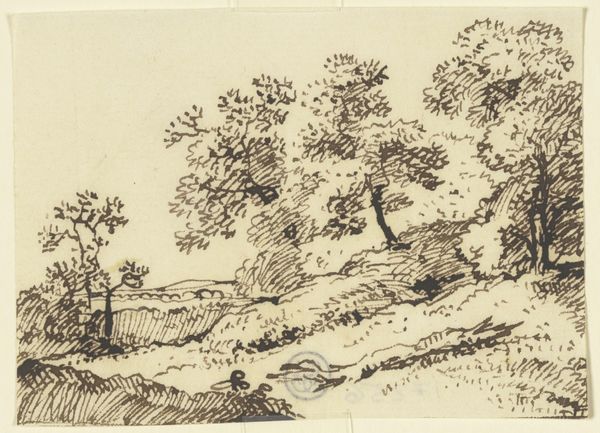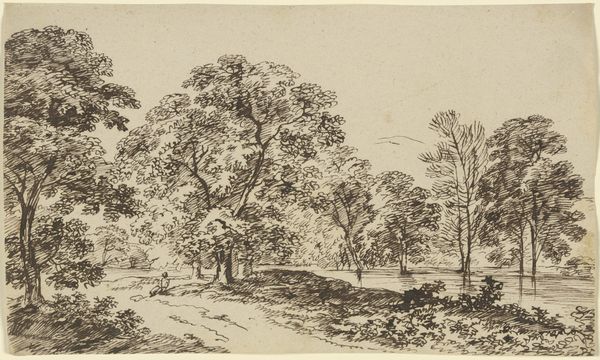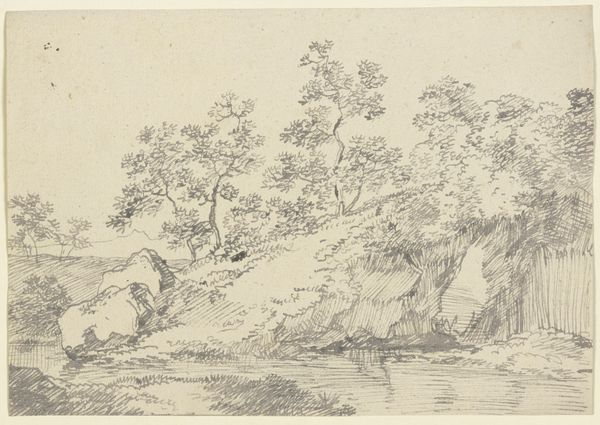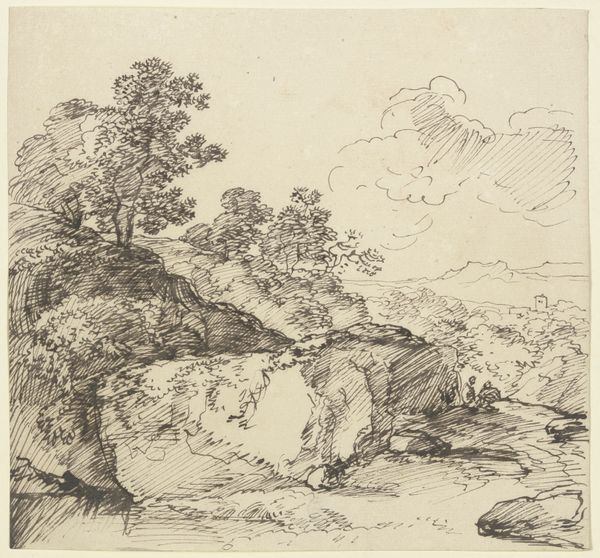
drawing, dry-media, ink, pen
#
drawing
#
ink drawing
#
pen drawing
#
landscape
#
dry-media
#
ink
#
15_18th-century
#
pen
Copyright: Public Domain
Curator: Looking at "Two Trees Left and Right of a Stream" by Franz Kobell, held here at the Städel Museum. What's your immediate take? Editor: It feels so…immediate. I can practically feel the hand of the artist moving across the paper. You can sense the material reality, the way ink bleeds slightly, the pressure applied. The whole thing breathes with this intimate presence, no? Curator: Absolutely. The image pulses with visual motifs – trees bracketing the brook create this portal into an idyllic space. This recurring "portal" formation invites you in and, historically, symbolizes passage into another, more profound level of consciousness or emotional connection with nature itself. Editor: Conscious or not, it’s a smart compositional trick. Visually enticing and likely fairly cheap to produce at the time. Tell me, do we know much about Kobell's process? This kind of landscape sketch would have been useful for any number of artisans needing patterns, prints or as part of a preparatory study. Was it purely artistic endeavor or functional? Curator: Most likely, a combination. Kobell’s approach reveals a confluence of factors: emerging landscape art trends, symbolic weight given to untamed nature, and personal fascination, no doubt! There is this underlying sense of nature as both a respite and reflection of the sublime. Editor: What I love about seeing art like this in a museum context is that we tend to forget how intensely handmade the early modern world really was. Before mass production, every mark here—that single wash of ink or the repeated etching to suggest form— speaks volumes. The image as evidence of work. Curator: That’s brilliantly observed, the act of creation, not merely a representation. I find this awareness transforms how one approaches this drawing—less about surface aesthetics, and more toward the labor and intention involved. Editor: It certainly makes me want to track down the specific ink Kobell was using; think about the paper; and how these factors may have changed through time. It makes you want to consider all the labor behind this piece that’s now on view as "Art". Curator: Precisely. And considering how landscape depictions shape collective identity and environmental awareness across generations only underscores its cultural and lasting weight. Editor: True. Looking closer at the techniques employed and what that communicates regarding its purpose is worth taking note of. Curator: Indeed. A reminder of the layered depths contained within this seemingly simple ink drawing. Editor: Well put.
Comments
No comments
Be the first to comment and join the conversation on the ultimate creative platform.

